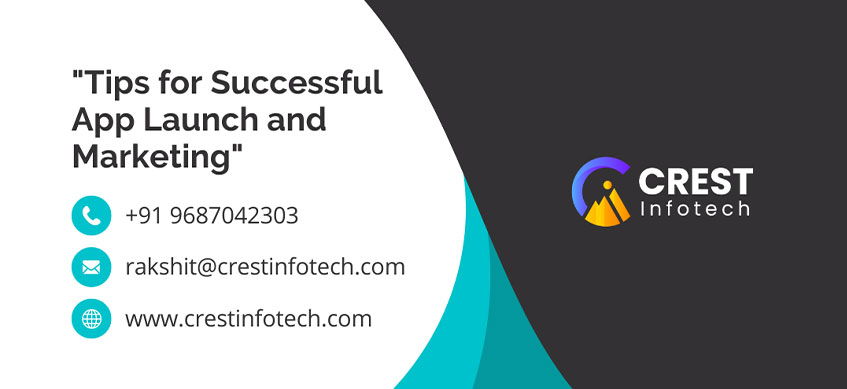Launching a mobile app successfully involves more than just developing a great product—it requires strategic planning, effective execution, and targeted marketing efforts to attract users and drive downloads. Whether you’re launching a new app or releasing an update, a well-planned app launch and marketing strategy can significantly impact its visibility, user adoption, and long-term success. This article outlines essential tips and best practices to ensure a successful app launch and effective marketing campaign.
Pre-Launch Preparation
- Define Your Target Audience:
- Conduct market research to identify your target audience, their preferences, behaviors, and pain points. Tailor your app’s features and messaging to meet their needs effectively.
- Set Clear Goals and Metrics:
- Establish specific, measurable goals for your app launch, such as download targets, user engagement metrics, or revenue objectives. Define key performance indicators (KPIs) to track and measure success.
- App Store Optimization (ASO):
- Optimize your app store listing with relevant keywords, compelling app descriptions, high-quality screenshots, and engaging app previews. ASO improves visibility and discoverability in app store search results.
- Create Compelling App Content:
- Develop engaging content that highlights your app’s unique selling points (USPs), benefits, and value proposition. Use clear, concise language to communicate key features and benefits to potential users.
Building Buzz and Awareness
- Generate Early Interest:
- Leverage teaser campaigns, sneak peeks, and pre-launch promotions to build anticipation and generate buzz among your target audience. Encourage users to sign up for notifications or pre-register on app stores.
- Utilize Social Media Platforms:
- Leverage social media channels (e.g., Facebook, Instagram, Twitter, LinkedIn) to create awareness, engage with potential users, and share updates about your app’s development and upcoming launch.
- Reach Out to Influencers and Reviewers:
- Identify influencers, bloggers, and app review sites relevant to your app’s niche. Build relationships and offer them early access to your app for reviews, testimonials, and promotional content.
- Create Engaging Visual Assets:
- Design visually appealing graphics, videos, and animations that showcase your app’s features, user interface, and benefits. Use these assets across social media, app stores, and marketing campaigns.
Launch Day and Beyond
- Monitor and Respond to Feedback:
- Monitor user reviews, ratings, and feedback on app stores and social media platforms. Respond promptly to user inquiries, address concerns, and incorporate constructive feedback into future updates.
- Iterate and Improve:
- Continuously gather user data, analytics, and performance metrics post-launch. Use insights to identify areas for improvement, refine features, and enhance user experience through iterative updates.
- Run Paid Advertising Campaigns:
- Allocate a budget for targeted paid advertising campaigns (e.g., Google Ads, Facebook Ads, App Install Campaigns) to reach a broader audience and drive app downloads. Monitor campaign performance and adjust strategies based on results.
- Engage and Retain Users:
- Implement retention strategies such as push notifications, in-app messaging, loyalty programs, and personalized content to keep users engaged and encourage ongoing app usage.
Measuring Success and Iterating
- Track Key Metrics:
- Analyze app analytics, user acquisition costs (CAC), retention rates, conversion rates, and revenue generation. Use data-driven insights to evaluate campaign effectiveness and optimize marketing strategies.
- Stay Updated and Adapt:
- Stay informed about industry trends, competitor activities, and user preferences. Adapt your app’s features, marketing messages, and engagement strategies to meet evolving user expectations and market demands.
- Celebrate Milestones and Engage Community:
- Celebrate app milestones, such as download milestones or positive reviews, with your community of users. Engage with users through social media, newsletters, and user forums to foster a loyal user base.
Conclusion
A successful app launch and effective marketing strategy require meticulous planning, creativity, and continuous evaluation of results. By focusing on defining your target audience, optimizing app store presence, generating buzz through pre-launch activities, leveraging social media channels, and engaging with influencers, you can maximize visibility, attract users, and drive app downloads. Post-launch, monitor user feedback, iterate based on analytics, and implement retention strategies to sustain user engagement and long-term success. With these tips and best practices, you can enhance your app’s launch readiness, amplify its reach, and position it for sustained growth in the competitive mobile app market.
This article provides actionable tips and best practices for planning a successful app launch and executing an effective marketing strategy to attract users, drive downloads, and achieve long-term success in the mobile app marketplace. Adjust content based on specific app categories, target demographics, and marketing objectives relevant to your app development and launch strategies.



